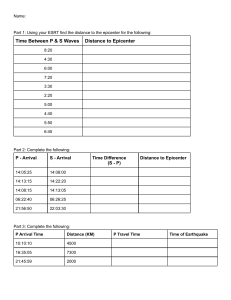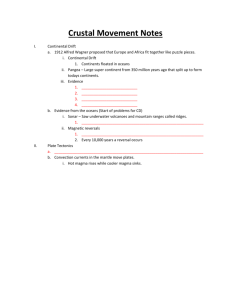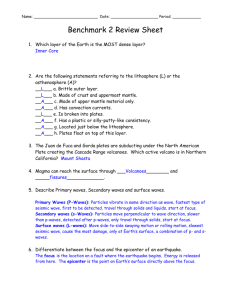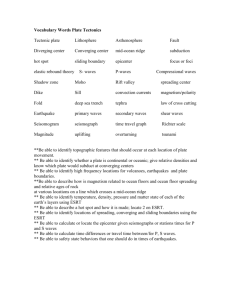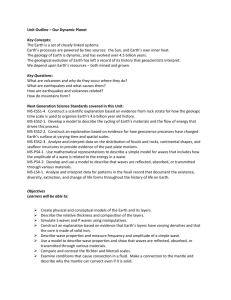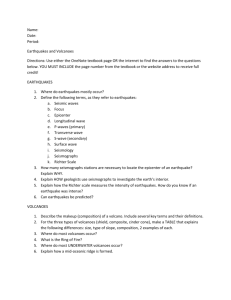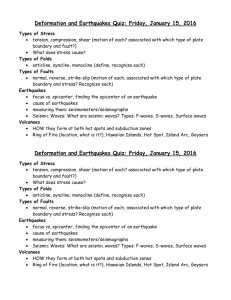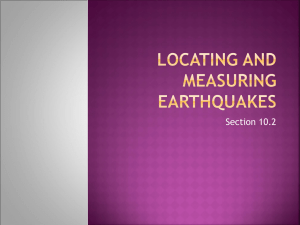STUDY GUIDE – UNIT 9 – PLATE TECTONICS
advertisement
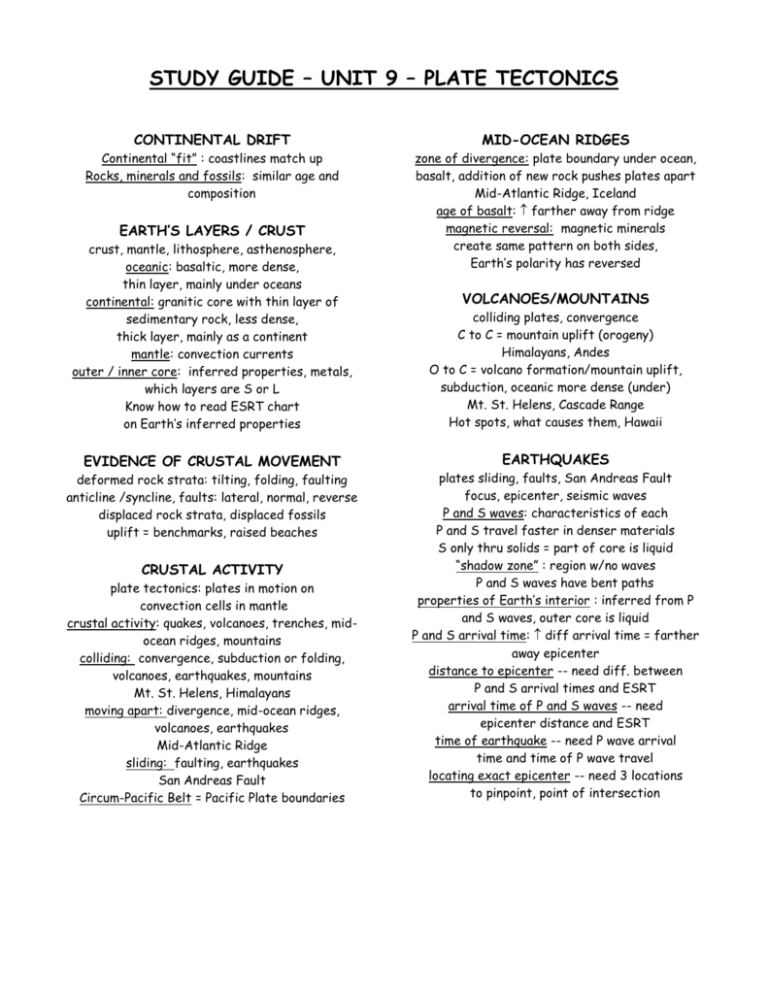
STUDY GUIDE – UNIT 9 – PLATE TECTONICS CONTINENTAL DRIFT MID-OCEAN RIDGES Continental “fit” : coastlines match up Rocks, minerals and fossils: similar age and composition zone of divergence: plate boundary under ocean, basalt, addition of new rock pushes plates apart Mid-Atlantic Ridge, Iceland age of basalt: farther away from ridge magnetic reversal: magnetic minerals create same pattern on both sides, Earth’s polarity has reversed EARTH’S LAYERS / CRUST crust, mantle, lithosphere, asthenosphere, oceanic: basaltic, more dense, thin layer, mainly under oceans continental: granitic core with thin layer of sedimentary rock, less dense, thick layer, mainly as a continent mantle: convection currents outer / inner core: inferred properties, metals, which layers are S or L Know how to read ESRT chart on Earth’s inferred properties EVIDENCE OF CRUSTAL MOVEMENT deformed rock strata: tilting, folding, faulting anticline /syncline, faults: lateral, normal, reverse displaced rock strata, displaced fossils uplift = benchmarks, raised beaches CRUSTAL ACTIVITY plate tectonics: plates in motion on convection cells in mantle crustal activity: quakes, volcanoes, trenches, midocean ridges, mountains colliding: convergence, subduction or folding, volcanoes, earthquakes, mountains Mt. St. Helens, Himalayans moving apart: divergence, mid-ocean ridges, volcanoes, earthquakes Mid-Atlantic Ridge sliding: faulting, earthquakes San Andreas Fault Circum-Pacific Belt = Pacific Plate boundaries VOLCANOES/MOUNTAINS colliding plates, convergence C to C = mountain uplift (orogeny) Himalayans, Andes O to C = volcano formation/mountain uplift, subduction, oceanic more dense (under) Mt. St. Helens, Cascade Range Hot spots, what causes them, Hawaii EARTHQUAKES plates sliding, faults, San Andreas Fault focus, epicenter, seismic waves P and S waves: characteristics of each P and S travel faster in denser materials S only thru solids = part of core is liquid “shadow zone” : region w/no waves P and S waves have bent paths properties of Earth’s interior : inferred from P and S waves, outer core is liquid P and S arrival time: diff arrival time = farther away epicenter distance to epicenter -- need diff. between P and S arrival times and ESRT arrival time of P and S waves -- need epicenter distance and ESRT time of earthquake -- need P wave arrival time and time of P wave travel locating exact epicenter -- need 3 locations to pinpoint, point of intersection
